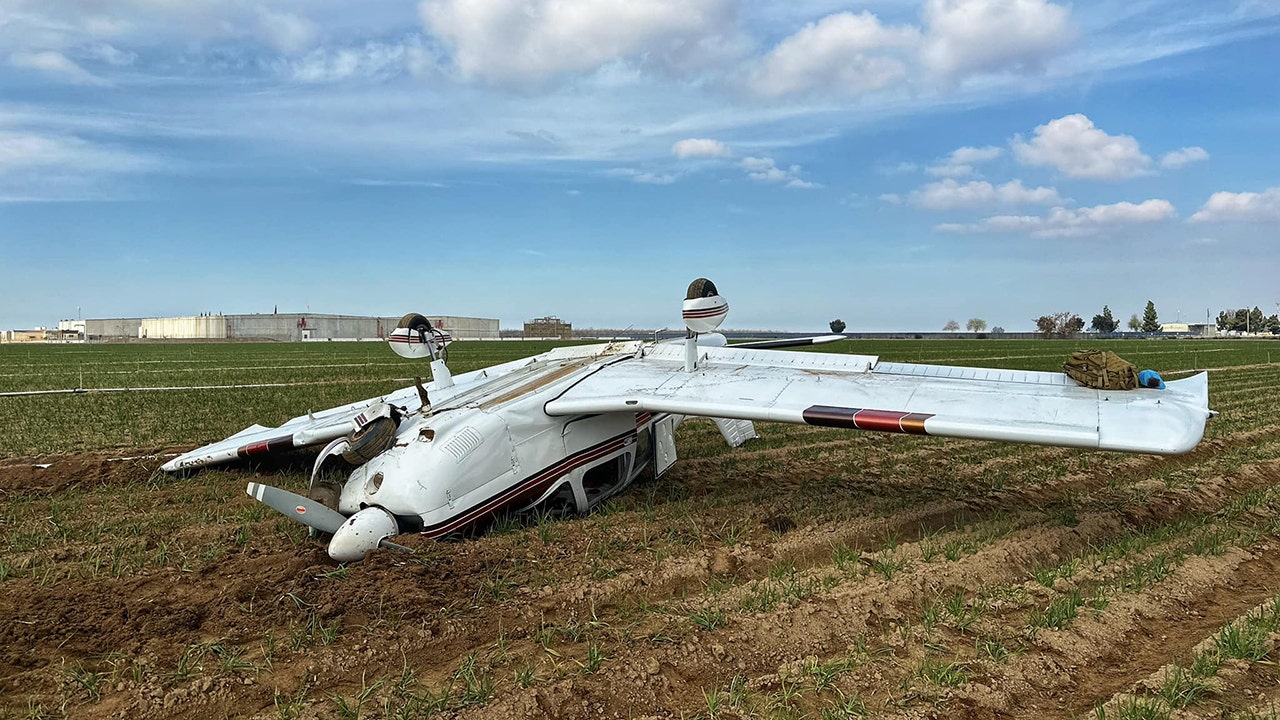United States
California small plane crashes upside down, 2 occupants survive and refuse medical treatment

On Sunday morning, a dramatic scene unfolded in south central California when a small plane crash-landed upside down in a vegetable field near Shafter, California. Miraculously, two people walked away from the wreckage, escaping the ordeal without serious injury. The incident occurred near Minton Field Airport, prompting a swift response from first responders. Firefighters rushed to the scene, navigating through the field with tools and medical equipment. Upon arriving at the overturned aircraft, they were met with a relieving sight: both occupants had already exited the plane and were refusing medical treatment. The Kern County Fire Department shared details of the incident on Facebook, noting that there was no smoke or fire visible, which likely contributed to the positive outcome.
The crash site, located on the south side of East Lerdo Highway, was secured by emergency personnel, who ensured there were no additional hazards or passengers in need of assistance. Once the situation was deemed under control, the scene was handed over to the Shafter Police Department. The Federal Aviation Administration (FAA) has since taken over the investigation to determine the cause of the crash. This incident is the latest in a series of aviation events that have captured attention in recent weeks, highlighting the unpredictability and risks associated with air travel.
Globally, the aviation community has faced several tragic incidents. Just days before the California crash, a small plane went down in São Paulo, Brazil, claiming the lives of two people. In Alaska, recovery efforts concluded for a commuter plane that crashed off the coast, resulting in the loss of 10 lives. These incidents, occurring in different parts of the world, underscore the fragility of life and the importance of aviation safety.
In the United States, two other significant aviation tragedies have emerged in recent weeks. On January 31, an ambulance plane transporting a young girl who had just received life-saving treatment crashed on a street near Roosevelt Mall in Philadelphia. The crash claimed the lives of all six people on board and one person in a car, while others were injured. This heartbreaking event highlighted the risks even in medical emergency flights, which are often critical for saving lives.
Earlier in January, a midair collision in Washington, D.C., between an American Airlines plane and an Army Black Hawk helicopter resulted in the deaths of 67 people. This devastating incident shocked the nation and raised questions about air traffic control and safety protocols. The series of crashes has brought attention to the need for ongoing improvements in aviation safety measures.
As these events remind us, air travel, while generally safe, is not without risks. The California crash, where two individuals walked away unharmed, serves as a stark contrast to the tragic losses seen in other incidents. It also emphasizes the critical role of first responders and investigators in ensuring that such events are thoroughly understood and prevented in the future. The stories of survival and loss remind us of the human element behind each aviation incident, as families and communities grapple with the aftermath.
In conclusion, the recent spate of aviation incidents across the globe serves as a sobering reminder of the complexities and risks inherent in air travel. While advances in technology and safety measures have made flying safer than ever, these events highlight the importance of continued vigilance and improvement. For those affected by these tragedies, the focus remains on healing and seeking answers, while the broader aviation community works to learn from these events and prevent future losses.











